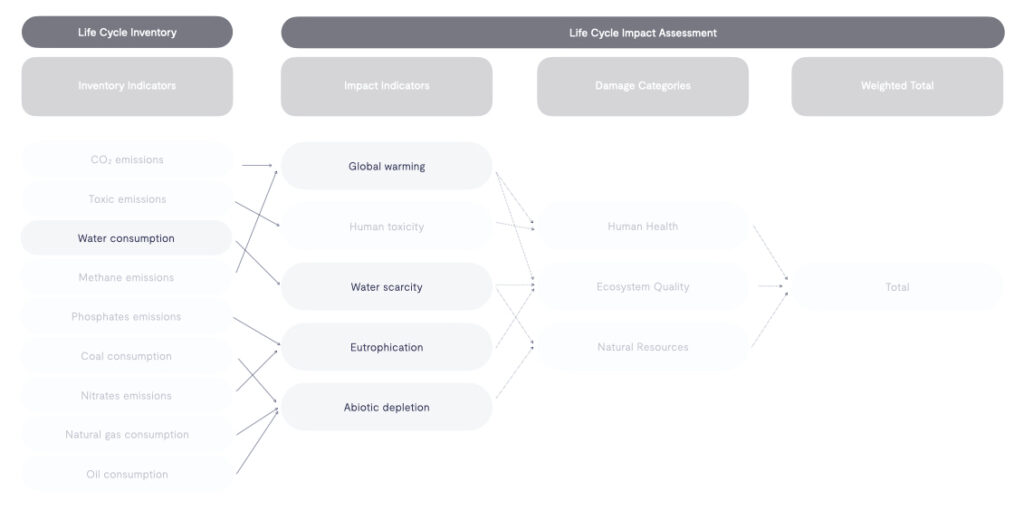The main difference is that an inventory indicator is a direct measurement (the “what”), while an impact indicator is the potential environmental consequence of that measurement (the “so what?”).
Think of it like a doctor’s visit:
- Inventory: The nurse measures your temperature. The reading is 39°C. This is the raw data.
- Impact: The doctor diagnoses you with a fever, which indicates a potential infection. This is the consequence or meaning of the raw data.
Inventory Indicators: The “What”
An inventory indicator measures the direct, quantifiable resources used or emissions created during a product’s lifecycle. It’s like an itemized list of everything that went into or came out of the process.
It answers the question: “What, exactly, was used or emitted?“
At BCome, our key inventory indicator is:
- Water consumption: This tells you the exact volume (in liters) of fresh water used.
Impact Indicators: The “So what?”
An impact indicator takes the raw inventory data and translates it into a potential environmental effect. It analyzes the inventory data to determine how it might harm ecosystems, human health, or deplete resources.
It answers the crucial question: “So what is the environmental consequence of that?“
For example, our Water scarcity indicator doesn’t just look at the liters used; it analyzes that consumption in the context of the specific region’s water availability. Using 1,000 liters of water in a desert has a much higher impact than using the same amount in a rainforest.
At BCome, our impact indicators are:
- Water scarcity
- Global warming
- Eutrophication
- Abiotic depletion
Summary
You need both to get the full picture. The inventory provides the essential raw data, and the impact provides the critical environmental context.
Use of inventory indicators and impact indicators within an LCA
